The Brazilian Association of Technical Standards - ABNT, among other attributions, is responsible for standardizing the formatting of technical documents, in order to facilitate their understanding and access to knowledge scientific.
This standardization takes place through the ABNT norms that, together, address all aspects of formatting academic papers.
See the list of the main ones formatting rules.
So, to better illustrate the subject, we have gathered some examples of documents correctly edited according to these rules.
Cover and Cover Sheet

According to the example above, the cover must contain: name of the educational institution, name of the author, title and subtitle of the work, volume number (if there is more than one), place and year of delivery.
In addition to these elements, the cover sheet must contain: the nature of the work, its objective and the names of the examiners.
Approval Sheet
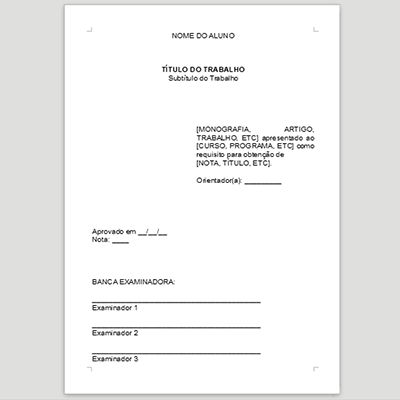
The pass sheet, although uncommon in most academic papers, is mandatory in monographs. It should contain: student's name, title, subtitle, nature and purpose of the work, date of approval, grade (optional) and signature of the evaluators.
Summaries
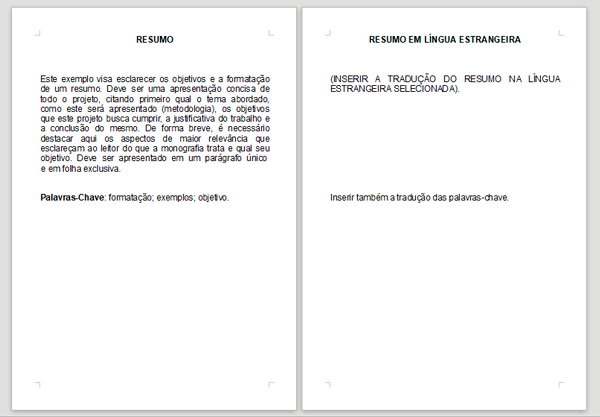
In addition to the information contained in the example, the ABNT standard indicates that the length of the abstract should be:
- 150 to 500 words from academic papers (theses, dissertations and others) and technical-scientific reports
- from 100 to 250 words journal articles
- 50 to 100 words for brief indications
The abstract in a foreign language must be the faithful translation of the abstract to the selected language and will follow the same formatting.
summary

The summary must show in order the topics and subtopics that will be covered in the work, specifying the page number of each one. This pagination could be:
- by the page number where the topic starts to be covered (example: 14)
- by the range of pages in which the topic is covered, separating the numbers by hyphens (example: 30-45)
- by the page numbers on which the topic approach is distributed (example: 27, 35, 64 or 27-30, 35-38, 64-70)
Font, Margins and Spacing
The ABNT standard suggests that the source of all text be from size 12, with the exception of footnotes, quotes longer than three lines, pagination and image captions, which should be smaller.
The sheets should adopt a margin left and top 3 cm, and 2 cm right and bottom.
Learn more about margins (ABNT) and how to format in Word.
Line spacing should be 1,5, with the following exceptions:
- quotes over three lines
- footnotes
- references
- illustration captions and tables
- catalog card
- nature, purpose and name of the institution (present on the title page)
In all cases above, the spacing should be simple.
Quotes
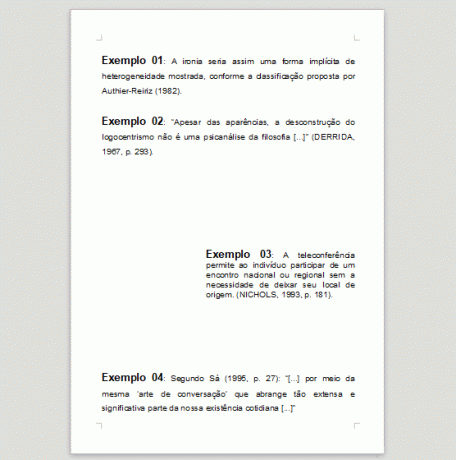
Examples of citations taken directly from Brazilian Standard No. 10520/2002.
Quotations must contain the information necessary to identify the source consulted. They may follow the formatting contained in the examples above, paying attention to the following:
- if the quote is made outside of parentheses, as in example 01, the font identification will be in upper and lower case
- if the quote is made in parentheses, as in example 02, the font identification will be in capital letters, only
- if the quote has more than 3 lines, as in example 03, it must obey an indentation of 4cm from the left bank, have single spacing it's the font size should be smaller than the rest of the text
- quotes within quotes, as in the example 04, should be done within single quotes
In addition, citations may contain:
- deletions, indicated by "[...]"
- additions or comments, indicated in square brackets "[ ]"
- emphases and highlights, indicated in bold, italics and italics
References

Examples of references taken directly from Brazilian Standard No. 6023/2002.
References should contain essential information for identifying sources and, whenever possible, additional information that facilitates this recognition.
References will be formatted according to the example above and will necessarily appear on an exclusive sheet after completion of the work. However, they can also appear:
- in footnote
- at the end of text or chapter
- before summaries, reviews and reviews
Optional Elements
In addition to the mandatory elements mentioned above, ABNT provides that academic papers may contain optional elements, at the discretion of the author or educational institution. Let's see.
Speed bump

The spine must contain the title of the work, name of the author and any information that characterizes the work (example: Volume 2). All information must be printed in the same direction as the spine.
Errata and Epigraph
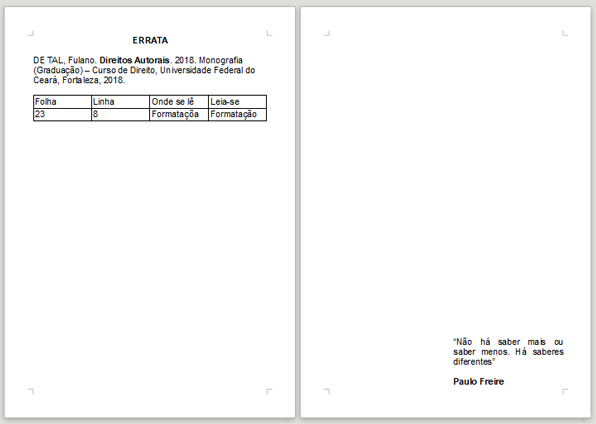
The errata must contain the work reference followed by the error identification, as shown in the example above.
The epigraph has no specific rules.
Dedication and Acknowledgments
Dedications and acknowledgments do not have specific rules.
List of Illustrations, Tables, Abbreviations, Acronyms or Symbols
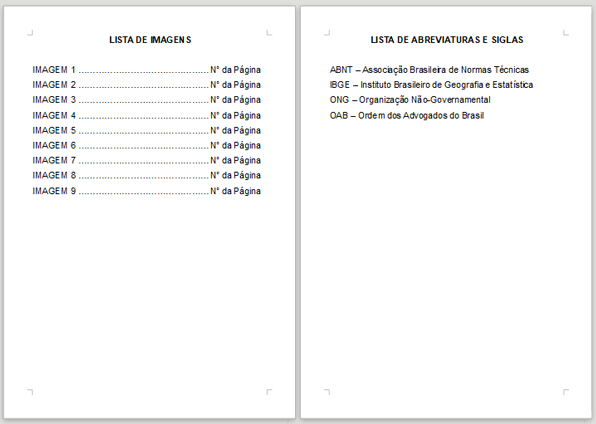
Lists of illustrations, tables, abbreviations, acronyms or symbols should list their items in the order in which they appear in the work, identifying the page number (in the case of illustrations and tables) and its meaning (in the case of abbreviations, acronyms and symbols).
Glossary and Index

The glossary should be organized in alphabetical order, while index can obey numerical order, chronological, systematic, etc.
Appendices or Appendices
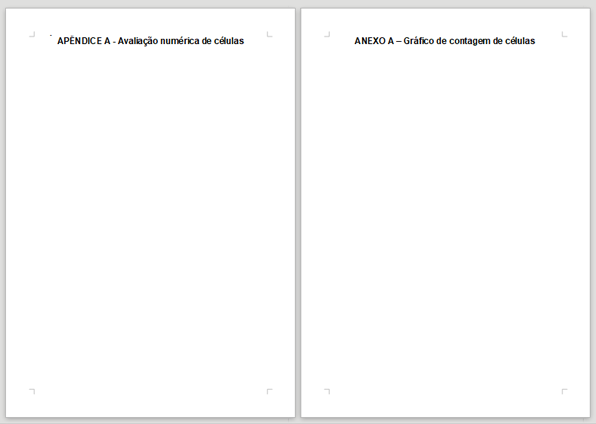
According to the example above, appendices and attachments must be identified by capital letters followed by a dash and the identification of their content.

